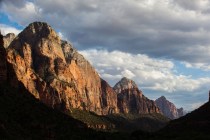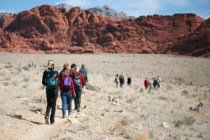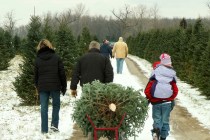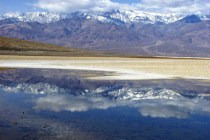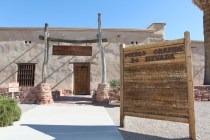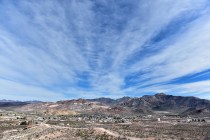Friendly Austin plays up its 19th-century charm

Austin once reigned as queen of the Central Nevada mining towns. Today the friendly little town lures visitors by trading upon its past, its location on U.S. Highway 50, nearby recreational attractions and locally mined gemstones.
Located near the center of the Silver State, Austin straddles U.S. 50, the so-called “loneliest road in America.” It sits atop a mountain summit, a spot that only a mining town would occupy. Its location ensures fine overviews of nearby mountains and valleys.
The old town lies 326 miles from Las Vegas. Follow U.S. Highway 95 northwest from Las Vegas to Tonopah. Travel east five miles on U.S. Highway 6 to reach the junction with state Route 376.
Follow this scenic highway north nearly 100 miles through Smoky Valley. Lofty mountain ranges rise on both sides of the valley. Side roads access ghost towns, hot springs and mountain canyons cut by fishing streams. It is a popular area for off-road adventures, challenging hikes and high-country exploration.
At the junction with U.S. 50, turn west and drive 12 miles to reach Austin, climbing two summits and passing a forest service campground, the closest of three public camping areas near Austin.
The 1862 discovery of silver ore in Pony Canyon just west of the future Austin town site sparked a boom that rivaled the excitement of the Comstock Lode a few years earlier around Virginia City. The new area near the Reese River drew thousands of fortune hunters. Dozens of camps sprang up as prospectors fanned out over Central Nevada. Almost all of them are ghost towns today.
Many were drawn to Austin, rapidly swelling its population to 10,000. Substantial stone and brick soon replaced the early wood and canvas structures.
As long as the mines were profitable, the town prospered. By the time the narrow-gauge Nevada Central Railroad reached Austin in 1880, the mines were yielding millions in silver. But by 1886, the narrow veins of silver began to play out. Large-scale mining ceased by 1911. Smaller mines and mills continued to work well into the new century.
Austin refuses to join the ranks of Nevada’s many ghost towns, although its population is now about 200. Its location along U.S. 50 keeps traffic moving through, pausing for fuel at a couple of service stations, food at three restaurants and overnight accommodations at three modest motels, a bed-and-breakfast and two RV parks.
Austin plays up its early Nevada history and 19th-century charm. Many of its buildings are listed on the National Register of Historic Places, including the courthouse, four early churches and the International Hotel, originally built in Virginia City and moved to Austin, which houses one of the restaurants. The most unusual surviving residence is the three-story Stokes Castle in the canyon west of town, built of stone in 1897 by a wealthy mine investor and occupied as a family retreat for just one month.
Many historic buildings downtown have been repurposed. The Gridley Store is now a museum. Others house interesting shops featuring rocks, bottles, jewelry and gemstones, especially turquoise. Surrounded by turquoise mines, Austin is emerging as Nevada’s unofficial turquoise jewelry capital.
Margo Bartlett Pesek’s Trip of the Week column appears on Sundays.





